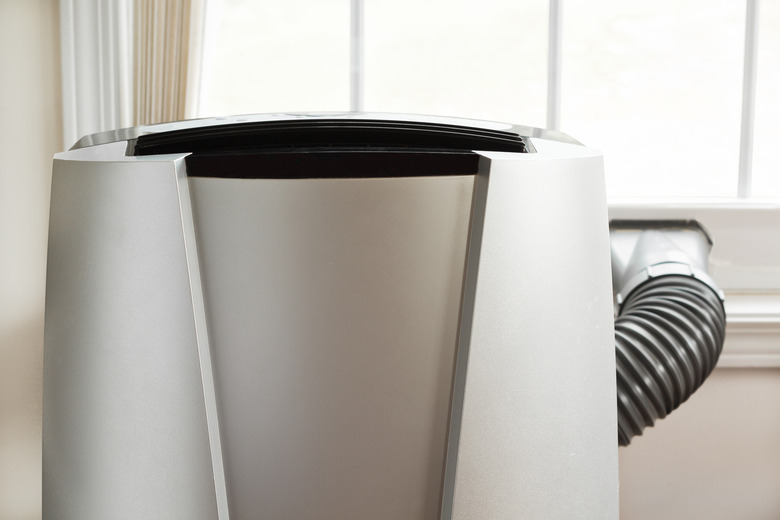What Is The Dry Mode On An Air Conditioner?
Most of the time, you probably run your air conditioner in cool mode, often denoted by a picture of a snowflake on your remote control or thermostat. You may have noticed a picture of a water droplet as well. If so, your air conditioner likely has a dry mode in addition to cool mode.
Tip
In dry mode, your air conditioner works as a dehumidifier, making your home feel cooler by removing moisture from the air and saving a bit of energy in the process.
Cool Versus Dry Mode
Cool mode is the most frequently used setting on an air conditioner. In cool mode, the air conditioner compressor runs along with the fan to push warm air across refrigerated coils, forcing cooled air into the room. In this case, the air inside the room feels cooler because it truly is.
Some air conditioners also have a dry mode. In dry mode, the air conditioner compressor and fan run at a much slower speed. Instead of cooling the air, the unit simply pulls the moisture out of it. In dry mode, an air conditioner essentially functions as a dehumidifier. In dry mode, the air feels cooler on your skin due to the lack of humidity, but its temperature is not actually changed.
Essentially, cool mode removes heat from the air. Dry mode removes moisture rather than heat. The end result may feel the same or similar, but the methods are quite different.
Dry Mode Efficiency
Because the compressor and fan run much more slowly in dry mode than in cool mode, running your air conditioner in dry mode is far more energy efficient and less expensive than running it in cool mode. Dry mode is more efficient than cool mode, but it's less efficient than running a dehumidifier alone.
If you find yourself using dry mode only occasionally, it makes sense to keep doing so since you already own your air conditioner. There's no need to buy a second appliance. If, however, you find yourself using dry mode on your air conditioner often, you may want to consider purchasing a dehumidifier instead.
When to Use Dry Mode
Dry mode works best when the temperature would be comfortable if not for the humidity. This often occurs in the spring and the fall seasons and is common on rainy days. Dry mode makes the most noticeable difference in extremely humid areas where the humidity level is 90 percent or more. When both the temperature and the humidity are high, opt for cool mode. When the humidity is high but the temperature isn't, dry mode will work well.
It's important to note that while lowering the humidity in a room can make it feel much cooler, you don't want to remove all the moisture from the air. A humidity level between 30 and 50 percent is best. To make sure you don't remove too much moisture from the air, heating and cooling experts recommend running your air conditioner in dry mode for no more than one or two hours at a time.
Benefits of Dry Mode
Dry mode consumes less energy than cool mode and can work as a dehumidifier, so you need not purchase a second appliance. Dry mode can also help you feel more comfortable on days with a comfortable temperature but high humidity. Dry mode has other benefits too.
Because running your air conditioner in dry mode reduces moisture, it can help you prevent mold and mildew from forming on furniture, walls, and other parts of your home. This not only prevents damage to your home but can also decrease your risk of allergies and asthma triggered by fungi and mold spores. Reducing humidity can also help you feel better by increasing your energy and appetite, both of which can falter on very humid days. Dry mode can also help eliminate musty smells in your home.
